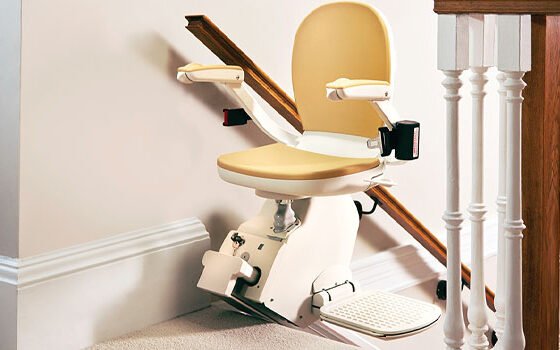Body and life changes are challenging to navigate. When those changes lead to loss of abilities, that’s doubly true. But when you love someone, seeing them lose their mobility may be even more challenging. So, how can you be a supportive partner and help improve home accessibility for your significant other?
Challenges to Home Accessibility for Your Partner
 When you’ve spent a lifetime depending on each other, realizing you can no longer do something that was once routine can feel devastating. So, recognize if your partner can no longer go up and down the stairs unassisted, it can be just as challenging emotionally as it is physically.
When you’ve spent a lifetime depending on each other, realizing you can no longer do something that was once routine can feel devastating. So, recognize if your partner can no longer go up and down the stairs unassisted, it can be just as challenging emotionally as it is physically.
Your partner may have difficulty facing the new reality of needing mobility assistance. So firstly, be patient.
Second, to help your partner accept it, consider telling them how much they matter to you. Be supportive and explain how much it will mean to know that they’ll be safer and there with you for longer.
You should also emphasize the benefits of living a fuller life with the ability to move around the house more safely and freely.
Finally, show this is a step toward independence. Reframing it that way can help make the change easier to accept.
Challenges to Home Accessibility for You
If it’s your partner who’s feeling less mobile, it may be hard for you to witness. Be patient with yourself, too. Know that it’s ok to feel challenged and that accepting change is never easy, but helping your partner get around more easily will make both of your lives more fulfilling.
If you find your partner is resistant to improving accessibility, it can be frustrating and even scary. Remember to emphasize the positives, as we discussed in the previous section. Let them know they can get a free consultation from ADL without committing to making any changes.
We’ll come to your home and explain the process and benefits of installing a stairlift and/or other mobility improvements.
Making Your Home More Accessible and Living a More Independent Life
Studies repeatedly show that aging in place improves health and life outcomes. So, anything you can do to stay in your home safely is a positive choice.
ADL can help you make your home safer for you and your partner as you age. That can mean installing a stairlift or wheelchair lift, providing supplies like lymphedema pumps and compression stockings to help you deal with chronic conditions, or providing other medical supplies like walkers and catheters.
But there is also a lot you can do on your own. Simple things like decluttering can make your home safer by making falls less likely. Removing or tacking down area rugs can also reduce trip hazards.
When you have someone in your home who has begun to use a wheelchair or walker, it can be an adjustment. But widening spaces by removing anything unnecessary and finding other ways to improve home accessibility will lead to a better and more rewarding life for both of you and dramatically increase the longevity of the time you’re able to spend living independently.
